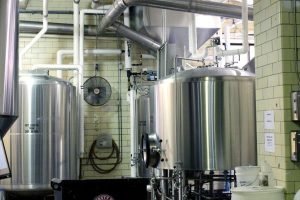 The development of mixing tanks has been a significant impact on the nation’s economy. It has helped all manufacturing companies to produce high-quality products. A mixing tank is a vessel that combines two different ingredients to make it homogeneous. The different types of mixing tanks provide excellence in manufacturing goods. But how much energy does a mixing tank consume?
The development of mixing tanks has been a significant impact on the nation’s economy. It has helped all manufacturing companies to produce high-quality products. A mixing tank is a vessel that combines two different ingredients to make it homogeneous. The different types of mixing tanks provide excellence in manufacturing goods. But how much energy does a mixing tank consume?
Energy Consumption of a Mixing Tank
In mixing operations, energy consumption determines the process quantity. It plays a role in the process, transfer, and cool-down period of the mixing tank. The distribution of energy in operations is essential to determine the performance of the mixing tank. But, it is quite an irony; the energy consumption in industrial mixing operations is mostly left unverified.
There are three subunits where the mixing tank consumes energy at the gearbox, motor, and tank. Thus, it makes measuring power usage difficult. But, a study on the power consumption in a mixer proposed that there is a difference in power input and power consumption from different types of mixers.
Different Types of Mixing Tank
There are several selections to choose from when looking for a mixing tank. Mixing tanks have two main types, the steel, and plastic.
Plastic Mixing Tanks
These plastic vessels have several benefits. It is less expensive than steel mixing tanks and weighs lighter. You do not need a crane to position it, and you can move it by hand. It is an advantage if your space has a rough terrain or elevations.
Plastic tanks don’t rust, and it has more extended longevity as it can withstand harsh climates. You do not have to worry about the sunlight. There is a UV-inhibitor to protect it. Moreover, it is durable as its components are bond together.
Lastly, the plastic mixing tanks have a more extensive selection. You can select one from a wide variety of shapes and sizes.
Steel Mixing Tanks
Stainless steel mixing tanks are for applications that need vacuum and pressure. More so, it provides several advantages for those who process and store pharmaceutical products. These tanks are expensive than the plastic ones as it is made with metals and welds. With its structure, it is better for industries with heating and cooling applications.
The tank is more resistant to cracks and breaks even when exposed to extreme cold or hot temperatures. Moreover, it has a high resistance to corrosive materials and chemical treatments. But, the stainless steels require regular maintenance and coatings to maintain its longevity.
How to Reduce Energy Consumption on Mixing Tanks
The manufacturing industries are one of the highest energy consumers. High energy consumptions can lead to a negative impact on our environment. Moreover, inefficient mixing can spike energy consumption more. Aside from it prolongs processing time and requires intensive cleaning, it affects the value of the products.
There are some ways to reduce energy consumption while maintaining product quality. But more significantly to make lower production costs.
Get the right mixing tank suitable for your process.
There are several ways to do the mixing process, yet it still works out as the same product. It is overwhelming to choose from several types of mixing tanks. But, an expert mixing tank supplier can help narrow down the choices. You can test the mixers and simulate operational conditions to rate their performance.
Test demonstrations help determine whether it is possible to have several operations. It is best to ensure that you have the right mixing tank, as this is the first step to reduce energy consumption.
Batch size evaluation as the production expands.
Some manufacturers add more mixing tanks to increase their production capacity. But that would cost a lot more? It may advance your production, but it may increase your operational costs. With every additional mixing tank, the energy consumption goes up. Instead, have a larger mixing tank to minimize operational cycles. This way, you will still achieve the production target without increasing cost.
Consider the mixing tank design.
You need to consider the design of the mixing tank. It is a vital element to optimize the performance of the mixer. At the same time, the right design provides these significant benefits:
- High-quality products
- Less production cost due to lesser waste and energy consumption
- Short periods of cycle process
- Longer life service
- Improved safety
When you consider the right mixing tank, everything comes into place.
Make discharge and cleaning simple.
Manufacturers who use viscous mixtures have extended processing time. It increases energy consumption due to more prolonged discharge and cleanup. If you have an automated discharge system, it accelerates the process. Thus, lesser energy consumption.
Conclusion
Every manufacturer is using mixing tanks to produce high-quality products. The manufacturing process uses energy to provide homogeneous products. Excessive energy consumption has its consequences on the environment and society. Thus, it is essential to consider energy consumption. Reduce energy consumption by getting the right mixing tank. Make sure that it will serve its purpose to avoid any increase in energy consumption and production costs.
 TechManik Best Cheap Android Phones and Tablets | Android Apps
TechManik Best Cheap Android Phones and Tablets | Android Apps 

